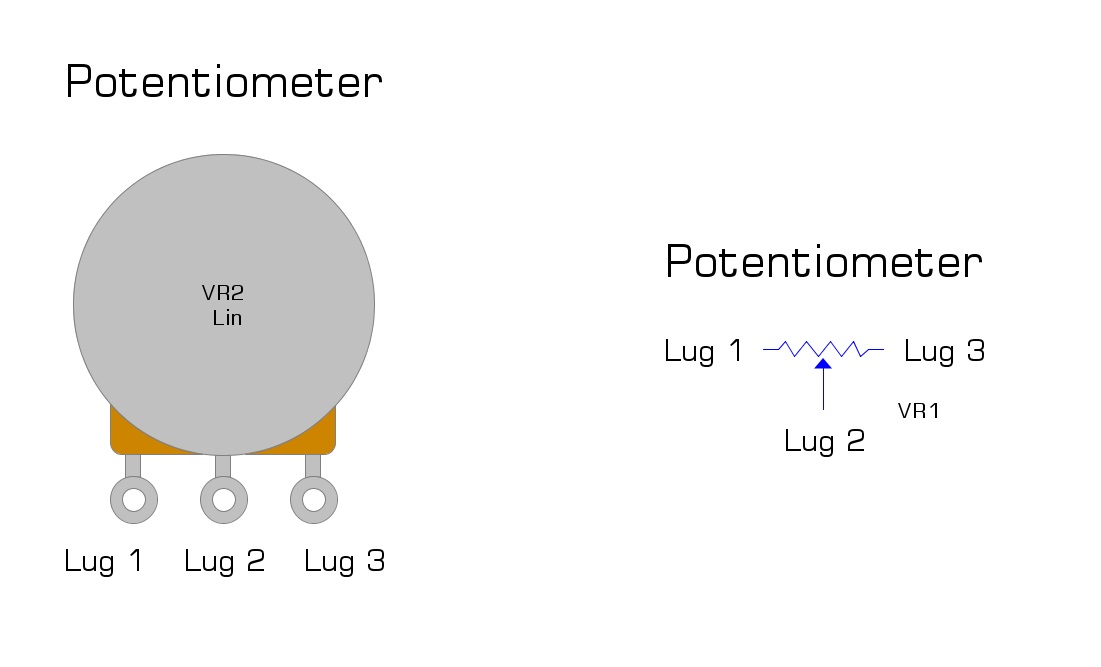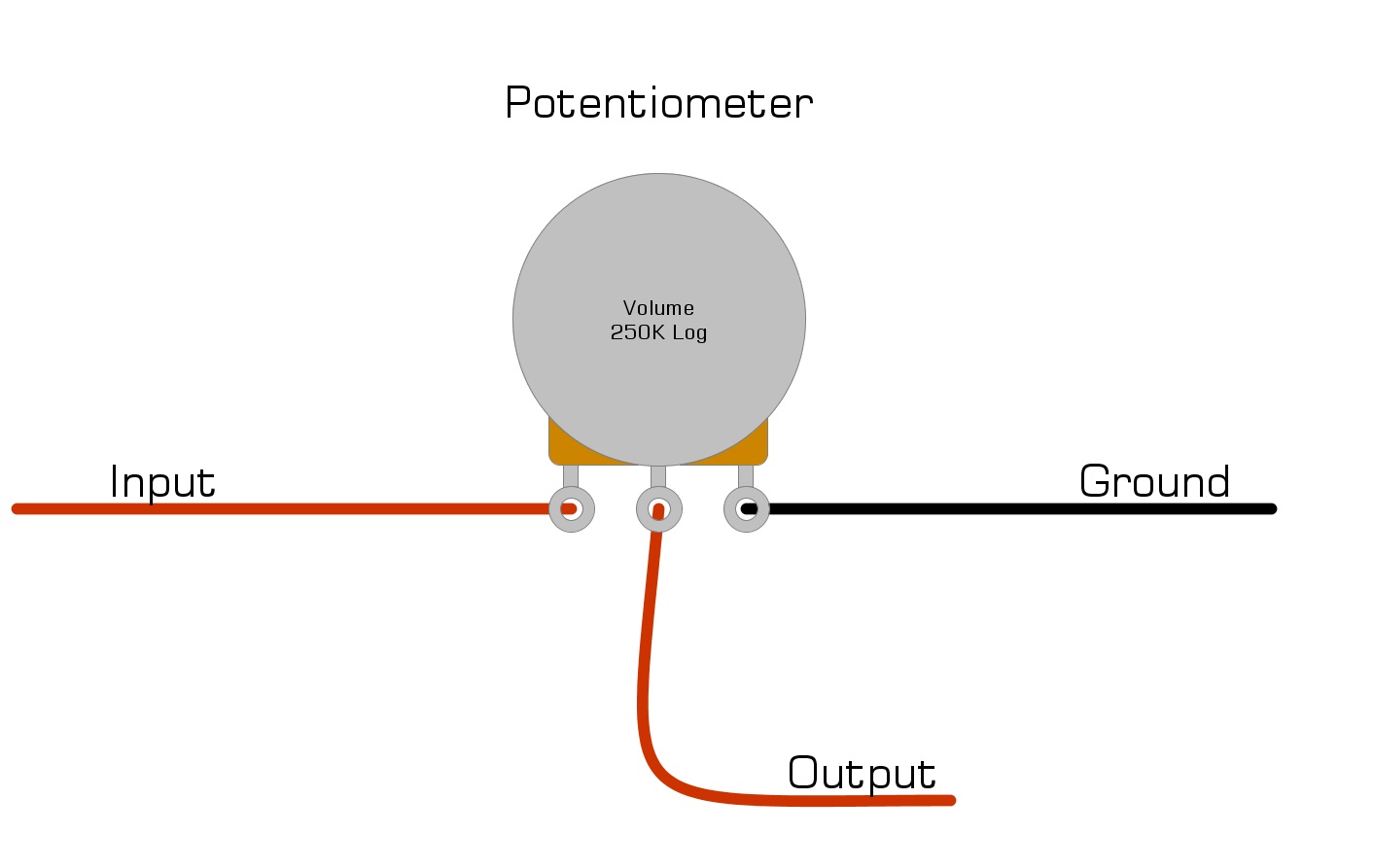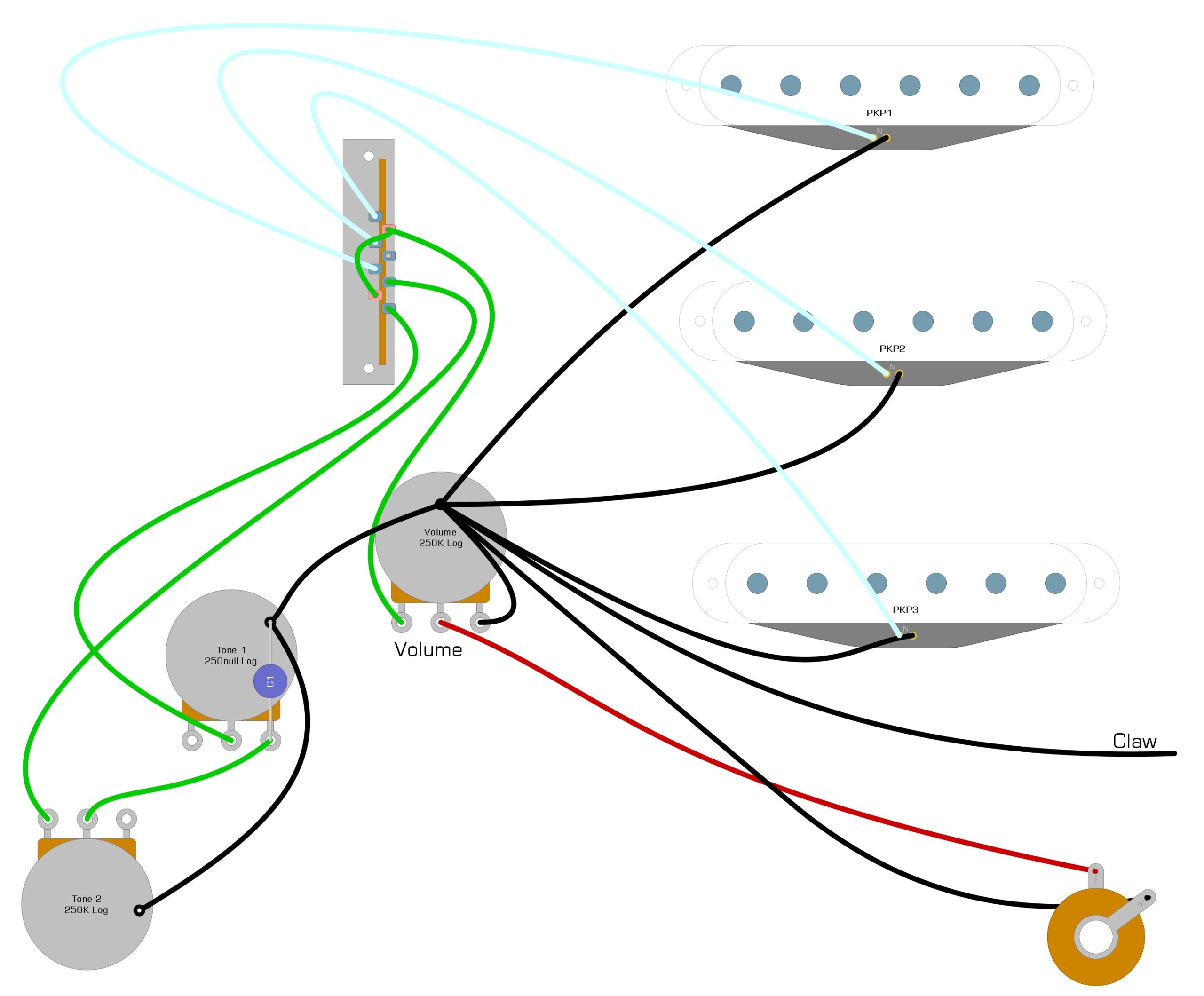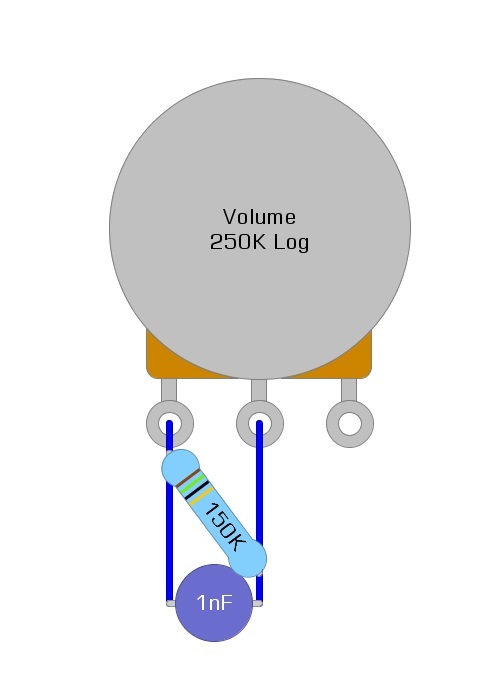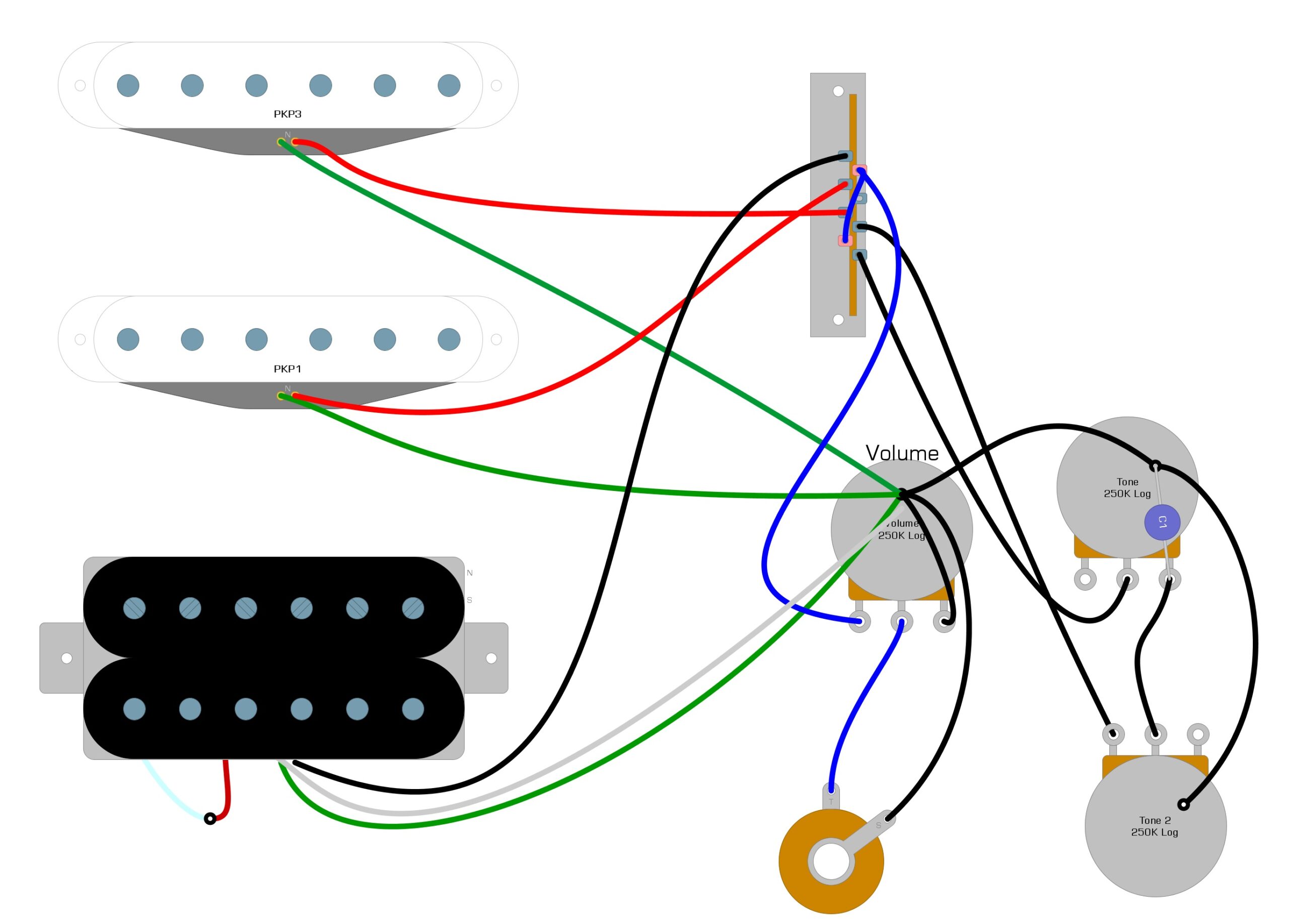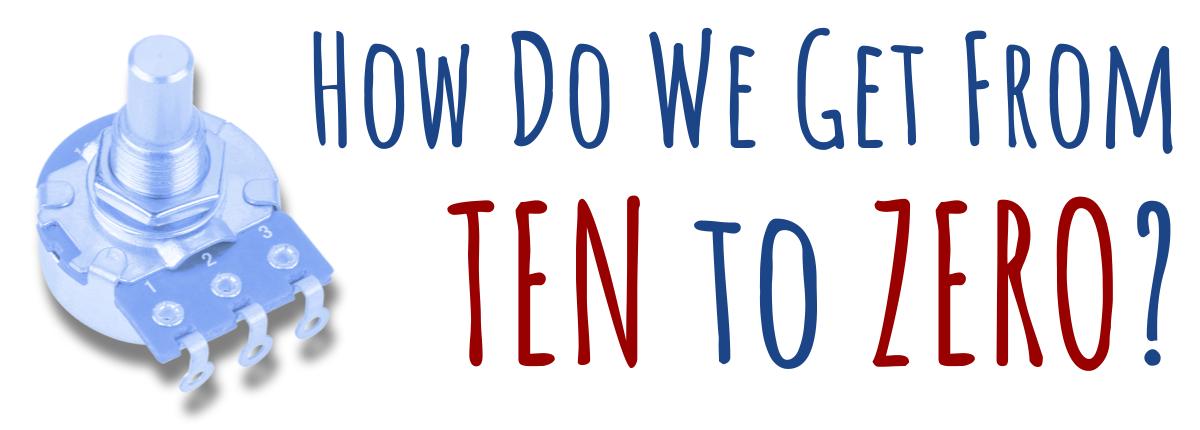
By Ed Malaker
Posted 09/11/2022
In this article, we’ll take a close look at the guitar volume pot to see how it works and how it affects your guitar tone. We’ll also explain the differences in potentiometer values and how they relate to your guitar circuit.
What Is a Guitar Volume Pot?
A guitar volume pot is a rotary knob on your guitar that allows you to turn the volume up and down. Most guitars have at least one volume control, and guitars such as the Gibson Les Paul or SG have two. There may also be other rotary pots on the guitar, but they will be tone controls. While rotating the volume pot will also change the tone, you can tell the difference because you can turn off the guitar using the volume control. Rotating the tone control will make the sound bright or muddy, but the volume will stay about the same.
How Does a Guitar Volume Pot Work?
The volume pot is a variable resistor. Inside of a volume pot, there is a circular strip coated with a resistive material. There is a lug attached to each end of this resistive material, and these are the right and left lugs of the volume pot. The center lug connects to a wiper that moves along the resistive material.
In Example 1, we illustrate what the inside of a tone pot looks like.
Example 1
You usually connect the input to Lug 1, the output to Lug 2, and the ground to Lug 3. Remember that Lug two is movable. As you rotate the pot so Lug 2 is closer to Lug 1, there will be less resistance between the input and output. There is also plenty of resistance between the output and the ground, so the signal will take the easier path to the amp. In this position, your guitar will be at full volume.
As you rotate the volume pot so that Lug 2 is closer to Lug 3, there will be much more resistance between the input and output, which will reduce the volume. There will also be very little resistance between the output and the ground. However, your amp also adds resistance, so your signal will follow the easier path to the ground, which will shut off your guitar.
Basic Wiring Diagram
In Example 2, we demonstrate how you wire a standard volume pot with the input to Lug 1, the output to Lug 2, and the ground to Lug 3.
Example 2
In Example 3, we show you how you install the volume in a standard Fender Stratocaster.
Example 3
In Example 4, we show you how you install the volume in a Gibson Les Paul.
Example 4
Pot Values
As you work on more guitars, you will notice that volume pots come in several values. Lower values allow more high frequencies to escape to the ground, giving the guitar a warmer tone. Higher values prevent higher frequencies from escaping, giving the guitar a brighter tone.
The two most popular values you will find are the 250k and 500k pots. 250k pots are used with single-coil pickups because they tend to be too bright and harsh, so the 250k pots will allow more high frequencies to escape to warm up the tone. Humbuckers sound much warmer, so guitar techs use a 500k pot to retain more high frequencies to prevent the guitar from becoming too muddy. You can read more about 250k and 500k pots in our article devoted to them here.
Another value that you might see is the 1000k or 1MEG pot. Guitar techs use this higher value when the 500k pot results in a sound that is too muddy. This value can often brighten the sound up enough, so you don’t need to change the pickups. You can read more about the 1MEG pot in our article that covers it in more detail here.
Treble Bleed
As you roll off the volume on your guitar, you’ll notice that the tone gets muddier. You lose treble frequencies because there is less resistance between the output and the ground in your volume pot, allowing more frequencies to escape through the ground.
A treble bleed is a simple modification where you add a capacitor and a resistor to the volume control to preserve some high-end frequencies. The capacitor is very small, typically about one nanofarad, and the resistor will be between 80k and 300k.
Example 5 illustrates the most popular version of the treble bleed, but there are others, and you can read about them in our Treble Bleed article.
Example 5
Mixing Humbuckers with Single-Coils
When you mix humbuckers with single-coils in the same guitar, like in many Ibanez and Jackson guitars, it can be hard to know what value to use. Most guitar techs will use 250k pots to keep the single-coils from becoming too harsh, but you will have to experiment with your guitar to find the tone you like best.
Example 6 illustrates a common way to wire a guitar that mixes single-coils with a humbucker and uses 500k pots. We also have an article that goes into more detail here.
Example 6
Effect on Distortion
If you use distortion, turning down the volume will clean up your tone. The distortion lessens because more high-end frequencies can escape to the ground as you turn down the volume. Distortion tends to be more pronounced in the high frequencies, so allowing them to escape before they get to the amp cleans the sound. Using the treble bleed modification we mentioned earlier can prevent the guitar from cleaning up because it retains the high frequencies. It also lessens the signal gain reaching the amp, so it doesn’t drive the amp as hard.
Summary
The volume pot is a simple component that allows you to adjust the volume of your guitar. You can also use it to manipulate your tone and switch between heavy and light distortion. You can brighten up your tone by using lower value pots and warm it up with higher value pots. You can also use the treble bleed modification to preserve your high end as you turn down the volume.
We hope you have enjoyed reading this guide and have learned something new. If you found this guide helpful, please feel free to share this article on how a guitar volume pot works on Facebook and Twitter. For more articles on guitar electronics, visit humbuckersoup.com.

